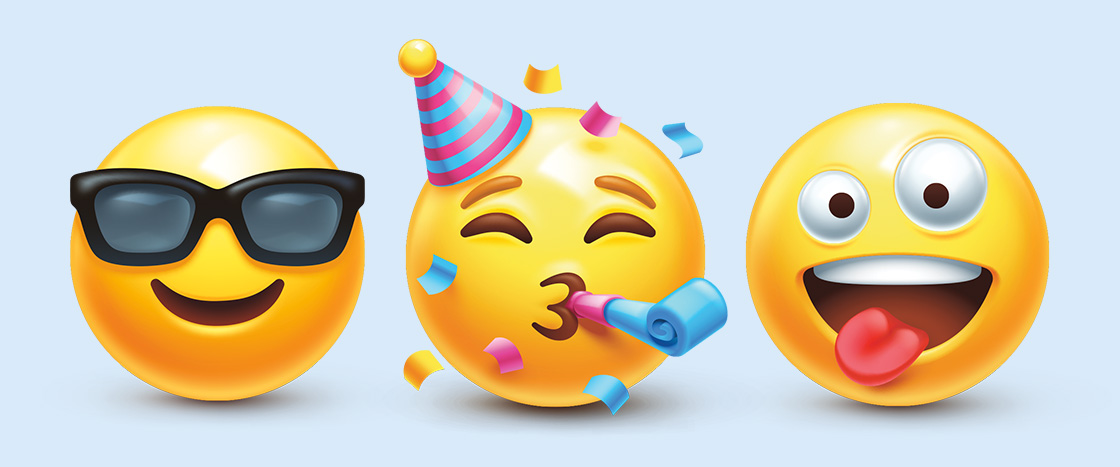I’m happy. I’m sad. That is soooo funny.
We use words to say these things. But we can also say them with pictures, like this:
😄 😥 😂
These pictures are called emojis. Some are faces. Some are food. Some are animals.
Where did emojis come from?

These tiny pictures are a big deal!
I’m happy. I’m sad. That is soooo funny.
We use words to say these things. But we can also say them with pictures, like this:
😄 😥 😂
These pictures are called emojis. Some are faces. Some are food. Some are animals.
Where did emojis come from?
Very Long Ago
Thousands of years ago, people in ancient Egypt wrote with pictures. The pictures were called hieroglyphics.
They used pictures of people, food, and animals. That’s how they wrote. The pictures were kind of like emojis!
Writing on the Internet
Thirty years ago, the internet was new. People wrote to each other on computers. They used pictures to make their writing fun. They made a smile like this :-) They made a wink like this ;).
The First Emojis
shutterstock.com
A Japanese phone company saw these pictures. They wanted to give people more pictures to use. They made the very first emojis.
Why were they called emojis? It’s two Japanese words put together. “Eh” means picture. “Moji” means word.
The Future of Emojis
In the U.S., emojis got big in 2011. That is when they were put on iPhones.
New emojis come out every year. In 2022, some new emojis were a slide, a bird’s nest, and bubbles, like this:
What emojis would you add?
Emoji Timeline
5,000 years ago: Egyptian hieroglyphics
1990s: Emoticons
1999: First emojis
2022: Emojis today
About the Article
Vocabulary
emojis, hieroglyphics, internet
1. BEFORE READING
Text Preview Bookmarks (5-10 minutes)
2. READ THE ARTICLE (10 MINUTES)
Assessment: Quiz (10 minutes)
ELA Focus: Nonfiction Text Features (20 minutes)
ELA Focus: Writing
Whole Issue Scavenger Hunt (20 minutes)
We created a scavenger hunt for several stories in this month’s Storyworks 2, including this nonfiction piece. The scavenger hunt can be done by students independently at home or during class time.
This is a self-contained group of slides that guide your students on a scavenger hunt through the whole issue. It’s not only fun, it also helps them make text-to-text connections.
To find it, look in your Resources section. Scroll down to Activities. You will see it there.To find it, look in your Resources section. Scroll down to Activities. You will see it there.